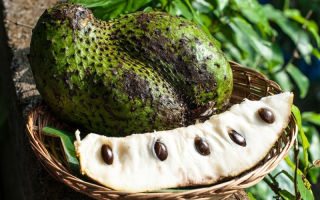Content
The medicinal properties of the guanabana fruit deserve detailed consideration. The exotic product has not only an interesting taste, but also a good healing effect.
What does guanabana look like
The tropical plant guanabana, which is also called the prickly annona and the sour cream apple, is a tree about 9 m tall with thick, oblong green leaves. The fruits of the plant are very large, up to 7 kg in weight and up to 35 cm in length. They resemble medium melon in size, but the skin is covered with large soft thorns.
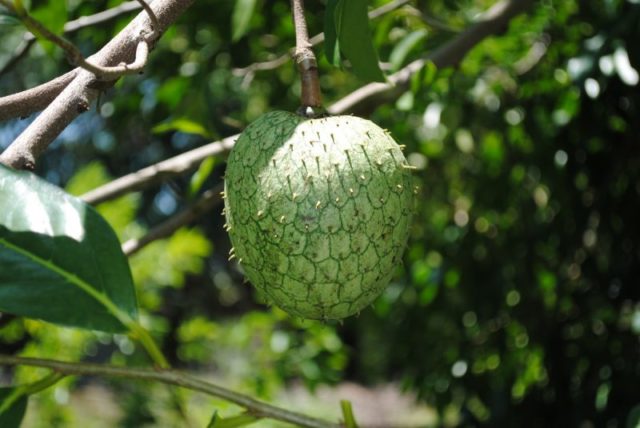
Unripe guanabana is rich green, ripe fruits are usually slightly yellowish and soft when pressed with a finger. The pulp is white or yellowish, custard-like in consistency, with medium-sized seeds inside. The fruits exude an aroma similar to that of vanilla and ylang-ylang.
Where does the guanabana fruit grow
Under natural conditions, the fruit grows in tropical zones - in the Bahamas and Bermuda and in Latin America. Guanabana is artificially cultivated in Australia, Southeast Asia, China and India, as well as in Sri Lanka.
Guanabana flavor
The taste of the fruit is difficult to describe in words without tasting the tropical fruit. However, gourmets say that in addition to citrus notes in the pulp, the taste of pineapple, strawberry and strawberry is different.
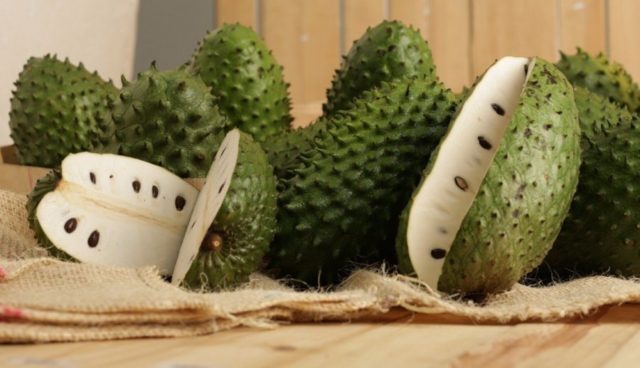
Composition and calorie content of guanabana
Guanabana is a very healthy tropical fruit with valuable medicinal properties. The following substances are present in the fruits of the plant:
- subgroup B vitamins - B2, B9, B5 and B6;
- vitamin C;
- choline;
- potassium and magnesium;
- phosphorus, iron, sodium;
- calcium and zinc;
- selenium and manganese;
- amino acids;
- organic acids.
In terms of nutrients, the fruit consists mainly of carbohydrates - as much as 16.8 g per serving of the product 100 g. There is 1 g of protein in the fruit, and only 0.3 g of fat. The calorie content of the fruit is 66 kcal, it cannot damage the figure with moderate use ...
Benefits of guanabana
In the middle lane and northern latitudes, tropical fruit is quite difficult to include in a regular diet. But even if consumed from time to time, the product will bring many benefits. The medicinal properties of the fruit are that it:
- improves liver function and normalizes gastric acidity;
- promotes the excretion of uric acid and therefore has a therapeutic effect in diseases of the joints;
- normalizes metabolic processes and hormones;
- has antiseptic and antiviral properties;
- helps with fungal diseases and promotes the elimination of parasites;
- has a positive effect on the nervous system and allows you to cope with insomnia and stress;
- relieves puffiness and soothes pain;
- helps to remove toxins from the body and get rid of extra pounds.
Eating guanabana is useful for vitamin deficiencies, the fruit will quickly help get rid of the symptoms of vitamin deficiency and anemia.
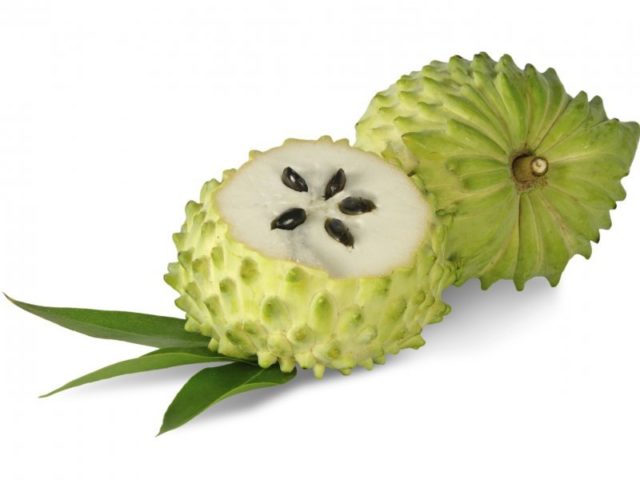
Does guanabana help cancer
The fruit has many medicinal properties, but it is of particular interest because it is able to help in the fight against oncology. According to research, the beneficial substances in the product can fight cancer of the pancreas, breast, prostate, lung and colon. Bioflavonoids and vitamins in the fruit have a suppressive effect on malignant cells, thanks to which the development of tumors can be slowed down.
Guanabana extract is included in many dietary supplements recommended for use in the fight against cancer. However, it must be emphasized that the fruit is not a miracle cure that can independently save a person from oncology. It is possible to take the fruit for cancer only as an additional therapeutic agent, in combination with traditional drugs, then the properties of the product will really benefit.
How to take guanabana for cancer
The product will have a positive effect on the body even with ordinary food consumption. However, to fight cancer, it is recommended to take the fruit in the highest concentration, that is, in the form of freshly squeezed juice.
When fighting cancer, you should drink 1 glass of guanabana juice daily. The taste is quite pleasant, but it is best to drink it on a full stomach, so that the juice does not irritate the mucous membranes of the stomach. The product has a particularly good effect on oncological diseases in the early stages and as a prophylaxis against malignant tumors.
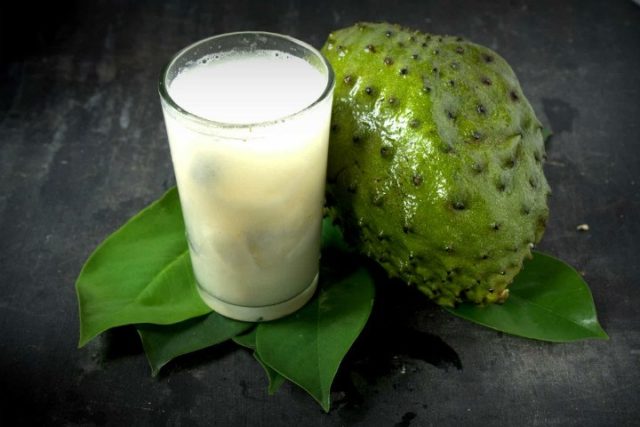
Reviews of doctors about the properties of guanabana against cancer
The anticancer efficacy of guanabana is considered more prophylactic; the medical community does not recognize it as a full-fledged therapeutic agent. However, doctors agree that eating the fruit does have a beneficial effect when combined with traditional anti-cancer drugs.
The use of guanabana in traditional medicine
Guanabana fruit is widely used in home treatment. It is recommended to consume the fruits of the plant and infusions on the leaves:
- with weakened immunity and during the period of seasonal colds;
- to get rid of worms and to lose weight;
- to lower blood sugar levels and to treat nervous disorders.
Since the guanabana pulp has anti-inflammatory and mild analgesic properties, compresses are made from the fruit to treat joints. In case of osteochondrosis, rheumatism and arthritis, it is useful to knead the fruits into gruel and apply to the sore spot under gauze or bandage for 1.5-2 hours.Guanabana not only soothes pain and inflammation, but also relieves swelling of the joints, restoring their mobility.
For flu, SARS and cough, you can make tea from the leaves. For its preparation, 2-3 leaves of the plant are poured with hot water and insisted for 5 minutes, and then they are drunk in the volume of a glass. You can take tea twice a day.
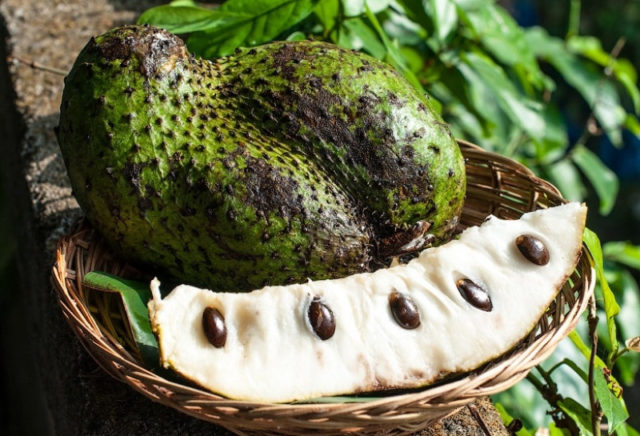
Limitations and contraindications
Like any product, guanabana has certain contraindications. It is necessary to completely abandon the use of tropical fruits:
- with a strong exacerbation of gastrointestinal diseases, organic acids in the pulp can have an additional irritating effect on the mucous membranes;
- during pregnancy and breastfeeding, a tropical fruit can cause allergies in both a woman and a newborn baby;
- with hypotension - eating fruit lowers blood pressure.
You can not use guanabana daily for a long time, in which case the fruit will damage the intestinal microflora, and dyspeptic symptoms will develop against the background of its use. It is also believed that excessive consumption of guanabana may contribute to the development of Parkinson's disease.
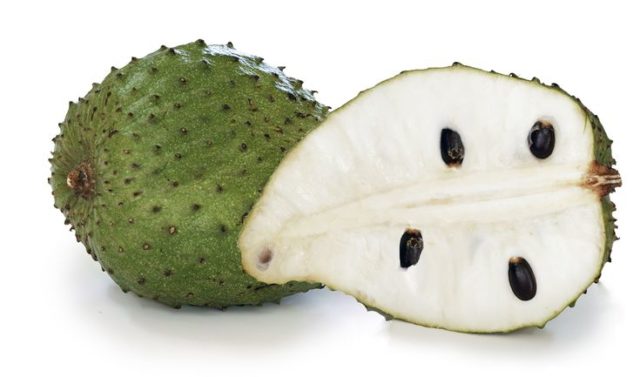
Conclusion
The medicinal properties of the guanabana fruit are highly rated, the tropical fruits are even beneficial in cancer therapy as an adjunct. But you can use it to treat any ailment no longer than a month in a row.

